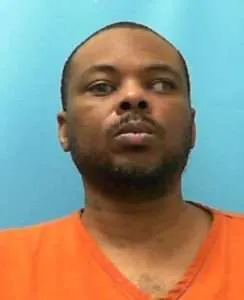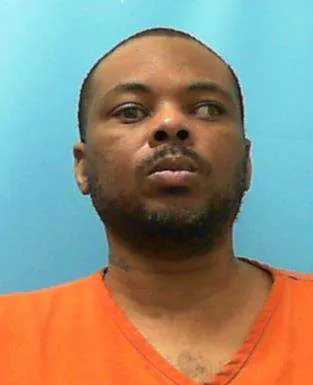Gary McCray was sentenced to death by the State of Florida for four murders
According to court documents Gary McCray would head into a drug house where he believed that someone had gone to the police regarding his activities. McCray would open fire killing ohn Ellis, 51; Phillip Perotta, 53; Robin Selkirk, 45; and John Whitehead, 37
Gary McCray would be arrested, convicted and sentenced to death
Gary McCray Photos

Gary McCray Now
DC Number: J01369
Name: MCCRAY, GARY B
Race: BLACK
Sex: MALE
Birth Date: 10/15/1979
Initial Receipt Date: 12/11/2008
Current Facility: UNION C.I.
Current Custody: MAXIMUM
Current Release Date: DEATH SENTENCE
Gary McCray Case
he evidence presented at trial established the following facts. In the early morning hours of May 23, 2004, a number of individuals were gathered inside Robin Selkirk and Phillip Perrotta’s Orange Park rental home. Prior to their deaths, Selkirk and Perrotta operated the residence as a “drug house” where people would purchase and sometimes use drugs. As the manager of the residence’s drug operation, Selkirk determined which drugs came into the house and those that were sold. McCRAY, a drug dealer nicknamed “Goldie,” routinely supplied Selkirk and the rental home with drugs, particularly crack cocaine. Selkirk would, in turn, distribute those drugs in exchange for money.
At approximately 3 a.m., McCRAY approached the exterior of the rental home from a dark wooded pathway leading to the home’s screened-in back porch. Before entering the residence, McCRAY peered through the kitchen window and back doorway. He was dressed in black clothing, was wearing gloves, and had on a dark hooded sweatshirt with the hood placed over his head. Although McCRAY used some type of black material to cover his face, portions of his face remained visible, including his eyebrows, eyes, nose, and cheeks.
During the time in which McCRAY surveilled the home’s back entrance, Eric Whitehead, Kevin Cunningham, and John Ellis, Jr., were awake and inside the rental home’s kitchen. Selkirk, Perrotta, and Eric Whitehead’s uncle, John Whitehead, were in the back bedrooms. After McCRAY completed his surveillance, he entered the home through the kitchen-door entrance, wielding what Cunningham described as an AK–47 rifle wrapped in black material. Both Eric Whitehead and Cunningham immediately recognized the gunman as McCRAY. As McCRAY moved into the kitchen, Cunningham exclaimed, “[D]amn, Goldie what did you get, a new weapon? Is that an AK–47?” Following this comment, McCRAY forced Eric Whitehead, Cunningham, and Ellis into the next room by pointing his rifle and verbally ordering the three men to the back of the house.
After McCRAY forced the men into the dining room, he observed another individual, Eric Goodman, peering into the home through a kitchen window overlooking the back porch. Goodman, a coworker and friend of Perrotta’s, had witnessed McCRAY walk up to the residence from the wooded area abutting the home’s backyard moments earlier. Upon seeing Goodman, McCRAY pointed the rifle at him and demanded that he enter the house, but Goodman fled the scene. McCRAY then returned his attention to the people inside. He grabbed Cunningham by his ponytail, turned him around, and pushed him toward the living room. As soon as McCRAY observed Cunningham moving toward the front door, McCRAY again exclaimed, “[N]o. I said everybody to the back.” Thereafter, McCRAY grabbed Ellis by the front of his shirt, but Ellis freed himself from McCRAY’s hold and proceeded to run out of the home. McCRAY followed him, and during his pursuit of Ellis outside, several individuals inside the home dispersed.
Cunningham fled the scene, and while doing so, heard “[a] volley of gunshots”—between ten and twenty in total. Eric Whitehead also fled and testified to hearing gun shots coming from the direction in which Ellis and McCRAY had run. Troy Wilson, who had been sitting on a couch in the living room and “riding out” a crack-cocaine high, got up, heard Ellis screaming, and then heard gunshots. Ellis’s dead body was later found with four gunshot wounds—one through the left ear, one through the left flank, one through the right thigh, and one through the left forearm—lying near a white Mustang parked on the front yard of the next door neighbor’s home.
Gary McCRAY subsequently returned, brandishing a handgun instead of the rifle he was seen carrying moments earlier. As he maneuvered toward the living room, McCRAY pointed the gun at Wilson, who, at the time, was still inside. When McCRAY reached the living room, however, Wilson escaped, running through the wooded area abutting the home’s backyard. During his escape, Wilson overheard screaming and around five or six more gunshots. Goodman, Cunningham, and Eric Whitehead positively identified McCRAY as the assailant. Although each admitted to suffering from crack-cocaine addictions, they testified that they were not under the influence of drugs when the shootings took place.
Police responded to the scene of the crime after receiving a 911 call from a distressed neighbor, who claimed to have heard gunshots and two sets of footsteps running outside of his home. When police arrived, the bodies of the remaining victims, Selkirk, Perrotta, and John Whitehead, were discovered. Selkirk’s body was located in the carport area and had sustained two gunshot wounds to the back of the chest. Police found Perrotta’s body on the kitchen floor with a single, close-range gunshot wound to the head. John Whitehead’s body was located in one of the back bedrooms and had also sustained a single, close-range gunshot wound to the head. A friend of Gary McCRAY’s testified to seeing McCRAY at sometime between 3:30 and 4:00 a.m. that morning wearing dark-colored clothing and with his hair styled in dreadlocks.
Several days later, Gary McCRAY shaved off his dreadlocks, fled the Clay County area, and drove to Tallahassee, where he was apprehended and arrested by U.S. Marshals for his connection to the murders.
An examination of physical evidence recovered from the crime scene revealed several facts linking Gary McCRAY to the shootings. Investigators found a dark sweatshirt along the dirt road leading to Selkirk and Perrotta’s rental home. Jason Hitt, a crime lab analyst with the Biology and DNA Section of the Florida Department of Law Enforcement (FDLE), testified that he extracted a DNA profile from the inside collar of the sweatshirt, the results of which established a partial DNA profile at nine of the thirteen loci that Hitt generally examines in such cases. Hitt then explained that all nine loci matched Gary McCRAY’s DNA sample. He further opined that “based upon the results for the partial profile that was obtained on the sweatshirt you can expect to find that profile in ․ one in 8 billion African Americans.” The actual murder weapons were never recovered.
Additional information received by the Clay County Sheriff’s Office was used by the State to establish Gary McCRAY’s motive for these murders at trial. In February 2004, approximately three months before McCRAY’s shooting spree, the narcotics unit of the Clay County Sheriff’s Office conducted a drug raid of Selkirk and Perrotta’s rental home while executing a search warrant. Prior to that drug raid, the narcotics unit had received complaints about drug-dealing emanating from the Selkirk–Perrotta rental home, which was identified as a crack house. Detective Vincent Hall, the case agent, believed that McCRAY was the home’s main drug supplier. After executing the warrant, police arrested Selkirk, Ellis, Perrotta, Cunningham, John Whitehead, and McCRAY.
The testimony further established that in the weeks leading up the May 2004 shootings, Gary McCRAY questioned several people about the events surrounding his February 2004 arrest. About three weeks prior to the murders, McCRAY informed Travis Russell, an acquaintance of McCRAY’s, that he believed someone in the Selkirk–Perrotta rental home was wearing a wire at the time of his arrest. A week later, Goodman and McCRAY had a conversation while at the rental home, during which time McCRAY questioned Goodman about the events surrounding the February drug raid. Specifically, he asked whether Goodman knew if any individual arrested along with him was wearing a wire or acting as an informant for the police to aid in McCRAY’s conviction. McCRAY wanted to know if those individuals arrested along with him “were rolling over on him” because McCRAY felt he was getting a “heavier charge.” Goodman observed that McCRAY’s demeanor appeared to be distraught.
Around the same time, Gary McCRAY also had a discussion with his friend, Amanda Long, and a separate discussion with Cunningham regarding the February 2004 arrest. During his conversation with Long, McCRAY explained that he was going away for a long time after having been arrested at that house for having drugs. McCRAY informed Long that “he was going to find out who had said something about it” and who had alerted the police to him. In his conversation with Cunningham, McCRAY asked Cunningham if the police had mentioned him; Cunningham replied in the negative.
To rebut the State’s case, the defense presented the testimony of Renee Herrera, a human geneticist and professor at Florida International University. Herrera’s testimony focused on sampling errors found in the statistical computations crime lab analysts use to compare DNA. However, on cross-examination, Herrera did concede that as the number of markers or sites increase—in this case, nine of thirteen—the probability of the tested DNA belonging to someone other than the DNA with which they compare it decreases. Gary McCRAY also testified in the narrative against the advice of defense counsel.
The jury found Gary McCRAY guilty of four counts of first-degree murder for the murders of Ellis, Perrotta, Selkirk, and John Whitehead.
https://caselaw.findlaw.com/court/fl-supreme-court/1573583.html
